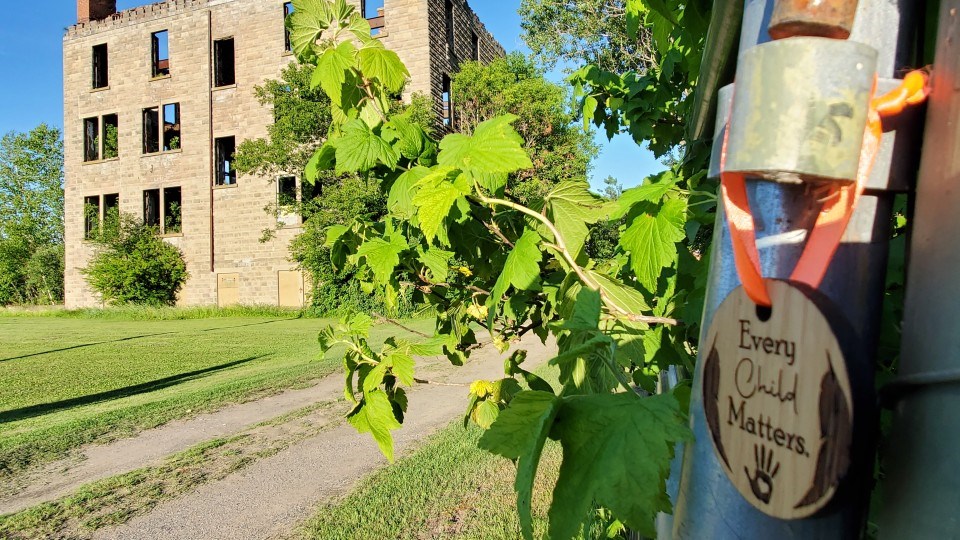At the end of June, I took a trip out to Spanish because I wanted to see the former St. Joseph’s School for Girls.
It’s a former residential school, one of two that were located within the small community. The other was St. Peter Claver School for Boys, later known as St. Charles Garnier College.
It was established on a 600-acre parcel of land. The three-storey building was built to house 200 students, and was the only residential school in Ontario operated by the Jesuits.
St. Joseph’s School for Girls was operated by the Daughters of the Heart of Mary.
Both schools were officially shut down in 1965, and Garnier College was demolished in 2004.
With the discovery of more than 1,000 unmarked graves near residential schools across Canada, I wanted to see what this place looked like for myself. No investigation has been done as of yet to determine if unmarked graves exist on the site.
While the former boys school is no longer there, the hollowed-out structure of the girls school remains. It’s located just up the street from the marina in Spanish. People pass by it all the time.
Media reports state there are currently no plans to search the grounds of the Spanish residential schools, and that it will likely take some time to prepare and investigate the area.
It was an eerie feeling looking up at the three-story building. You can see that people have placed children’s shoes at the base of the building in several locations. Medallions and medicine pouches were hung on the fence at the entrance, one bearing the phrase, “Every child matters.”
Across the street, at the park next to the marina, several memorials have been created to honour the lives of the children whose bodies are being found. Dozens of pairs of shoes and stuffed animals of all shapes and sizes have been placed at the memorials.
Witnessing the deteriorating building juxtaposed with the memorials was both poignant and surreal.
Just up the road from the former residential school is a cemetery. It’s where some of the children who died while at the school are buried. A plaque inside the cemetery lists all the names. Many died in 1918 due to the Spanish flu.
It was an eye-opening experience, to say the least, and I’m sure there will be a lot more attention to the area as plans to investigate the area become action.
There is a crisis line available for those impacted by Canada's residential school system. The number to call for anyone experiencing distress or trauma from their residential school experience is 1-866-925-4419. The line is available 24 hours a day, seven days a week.
